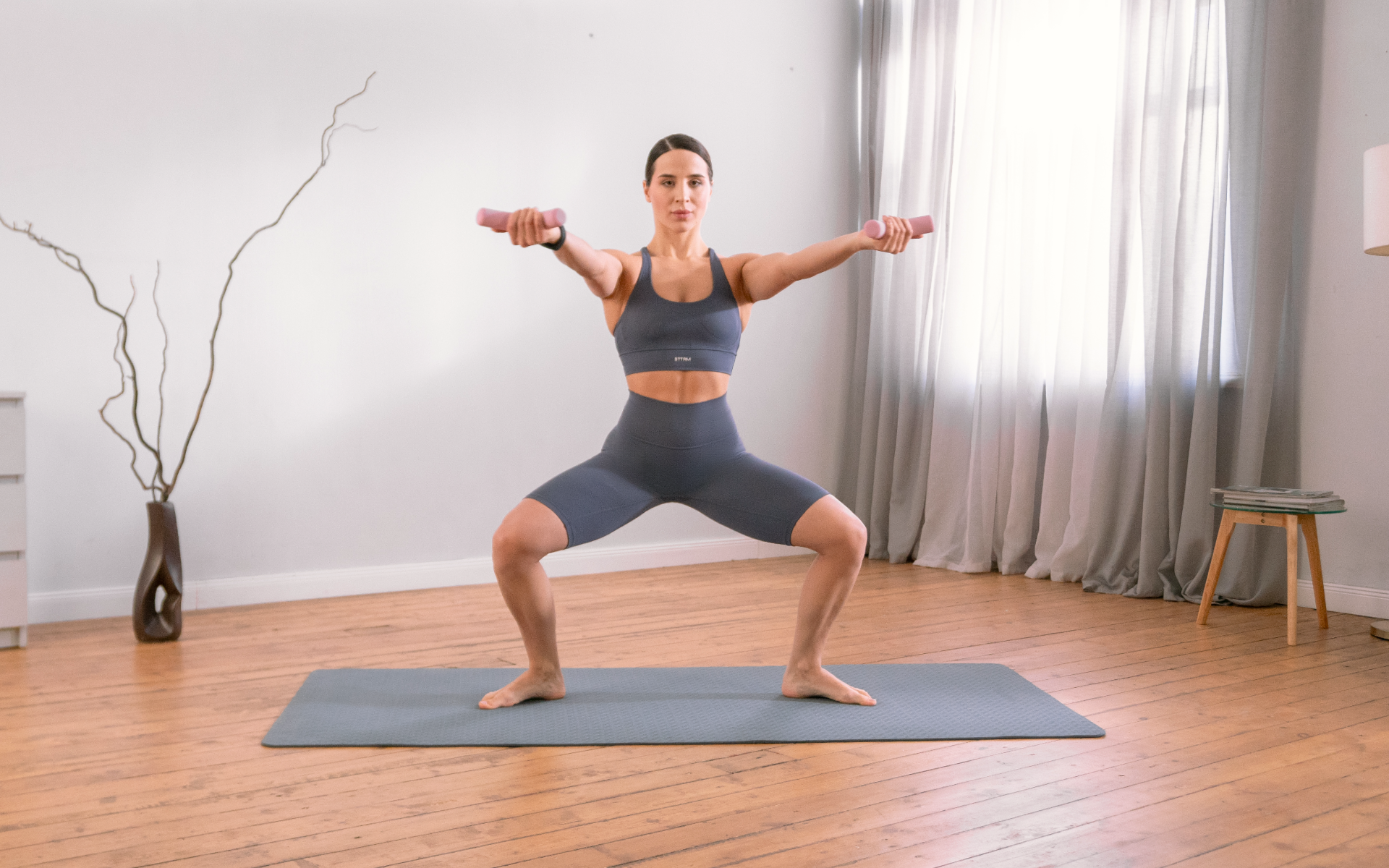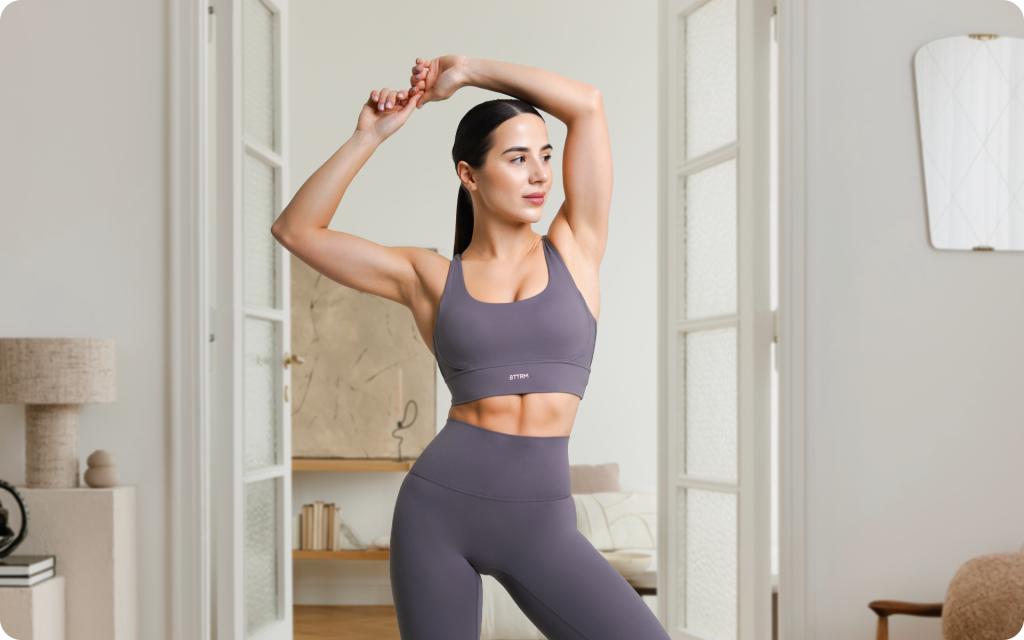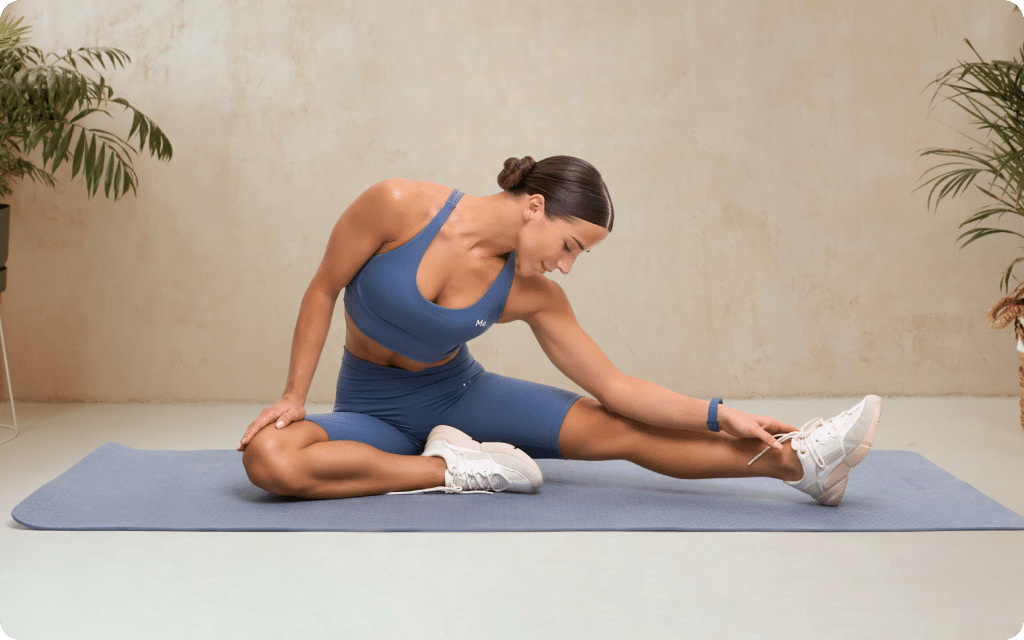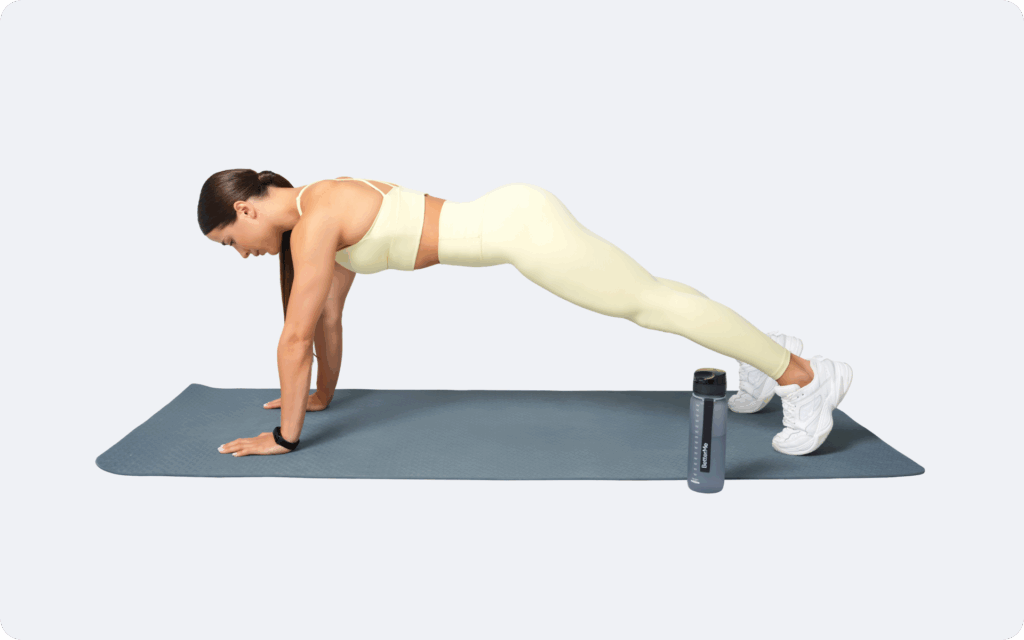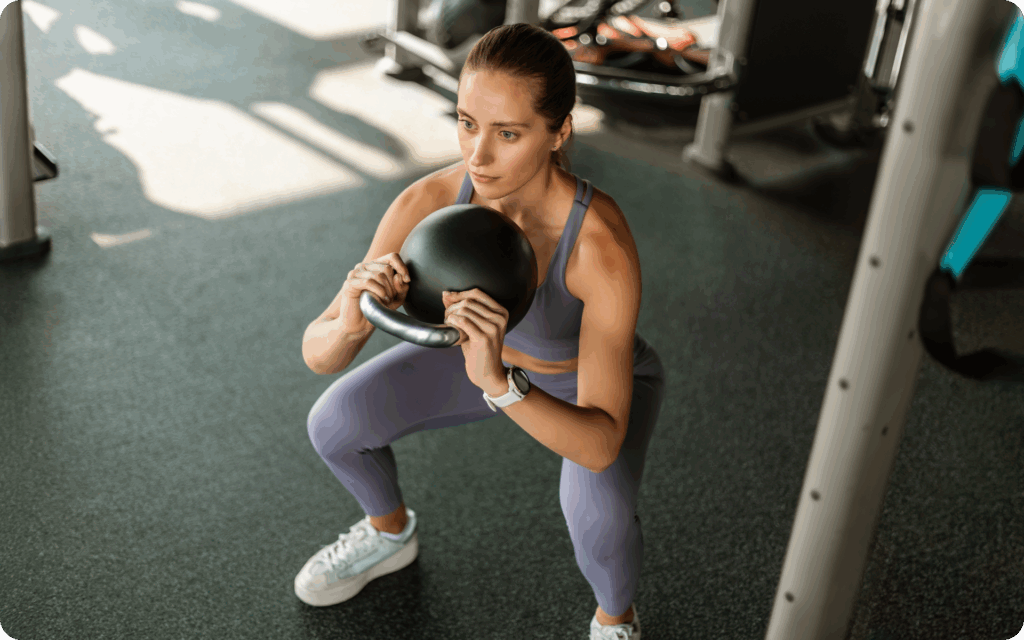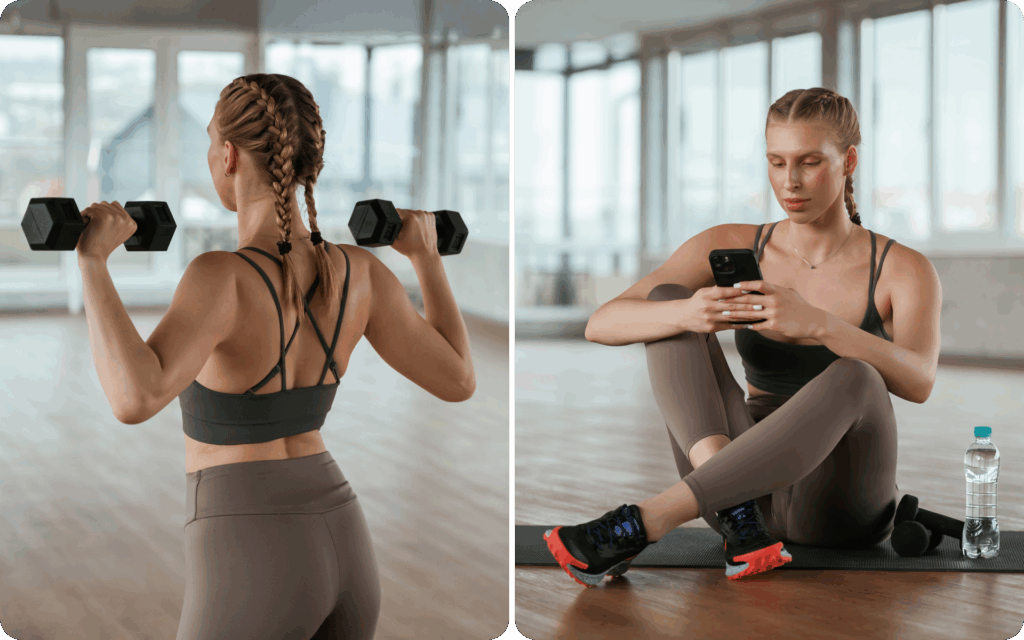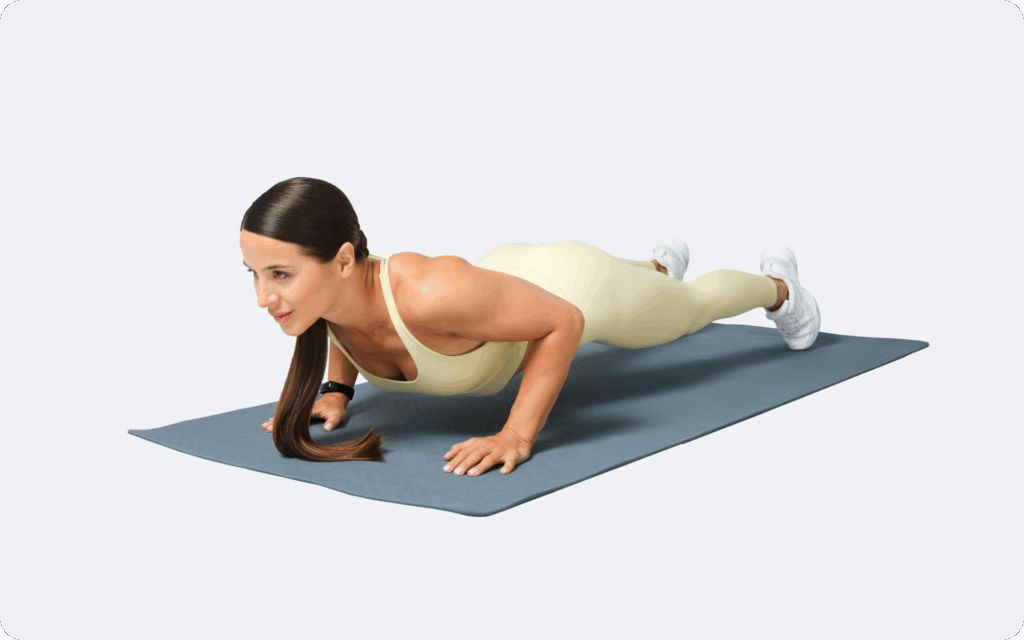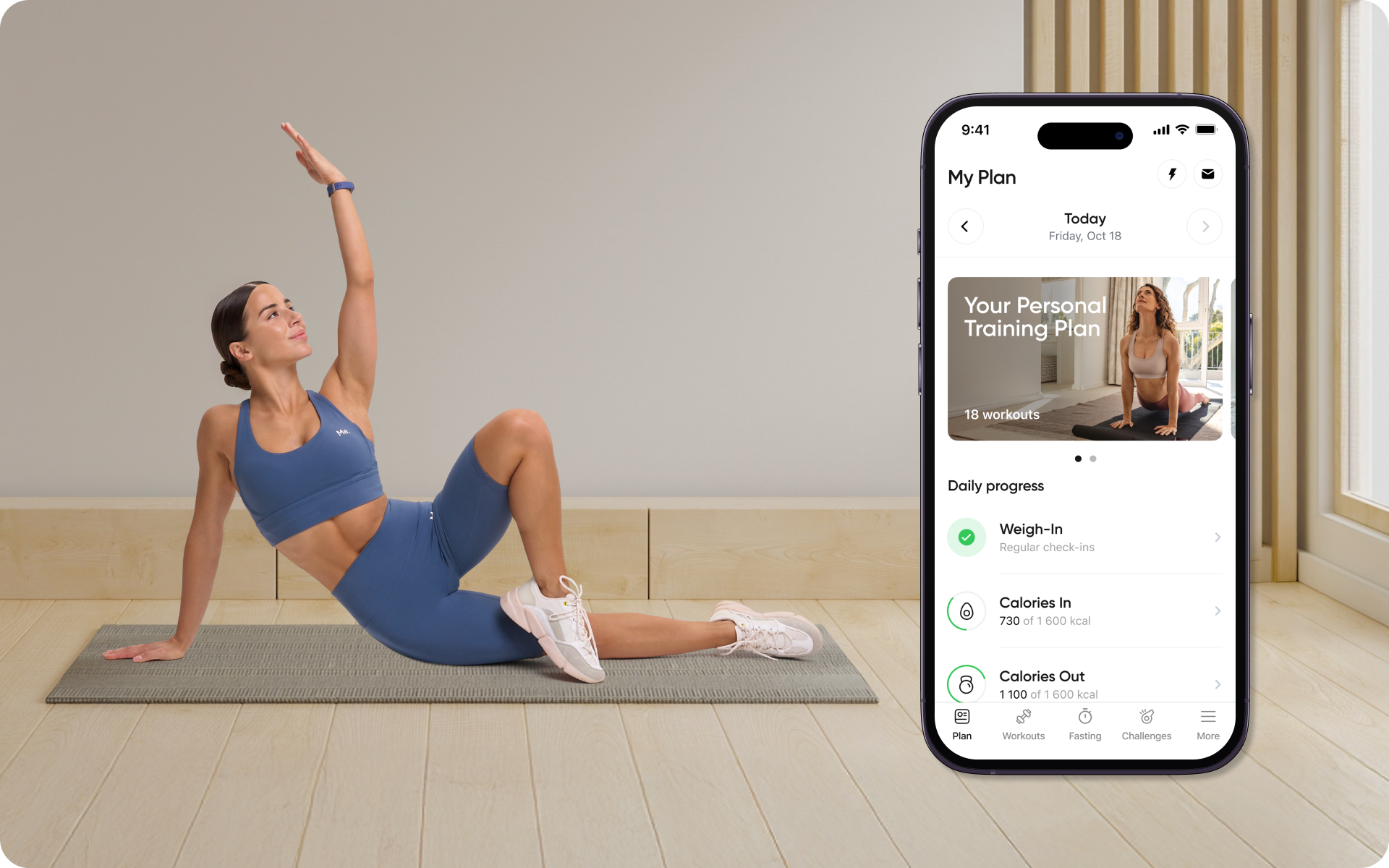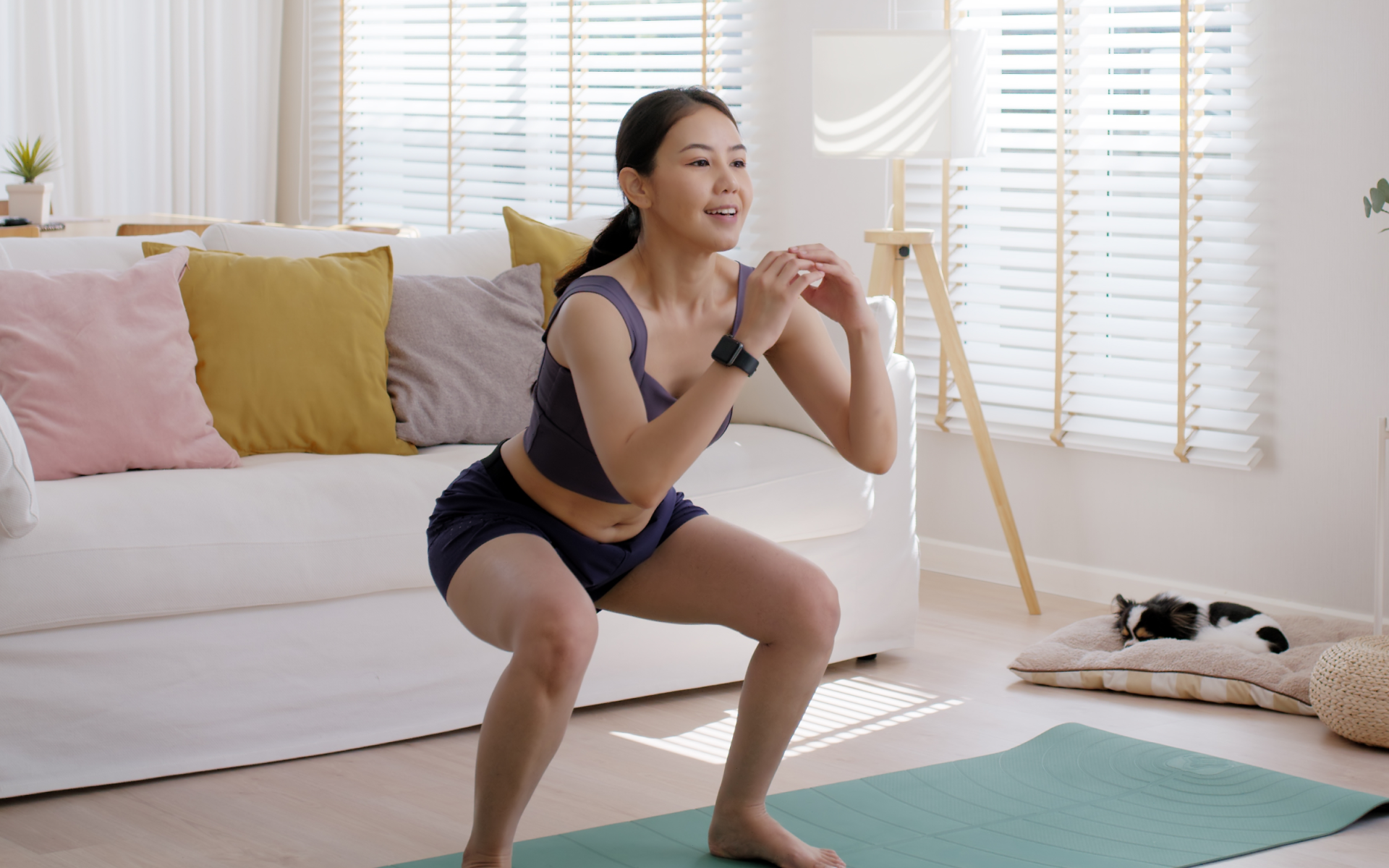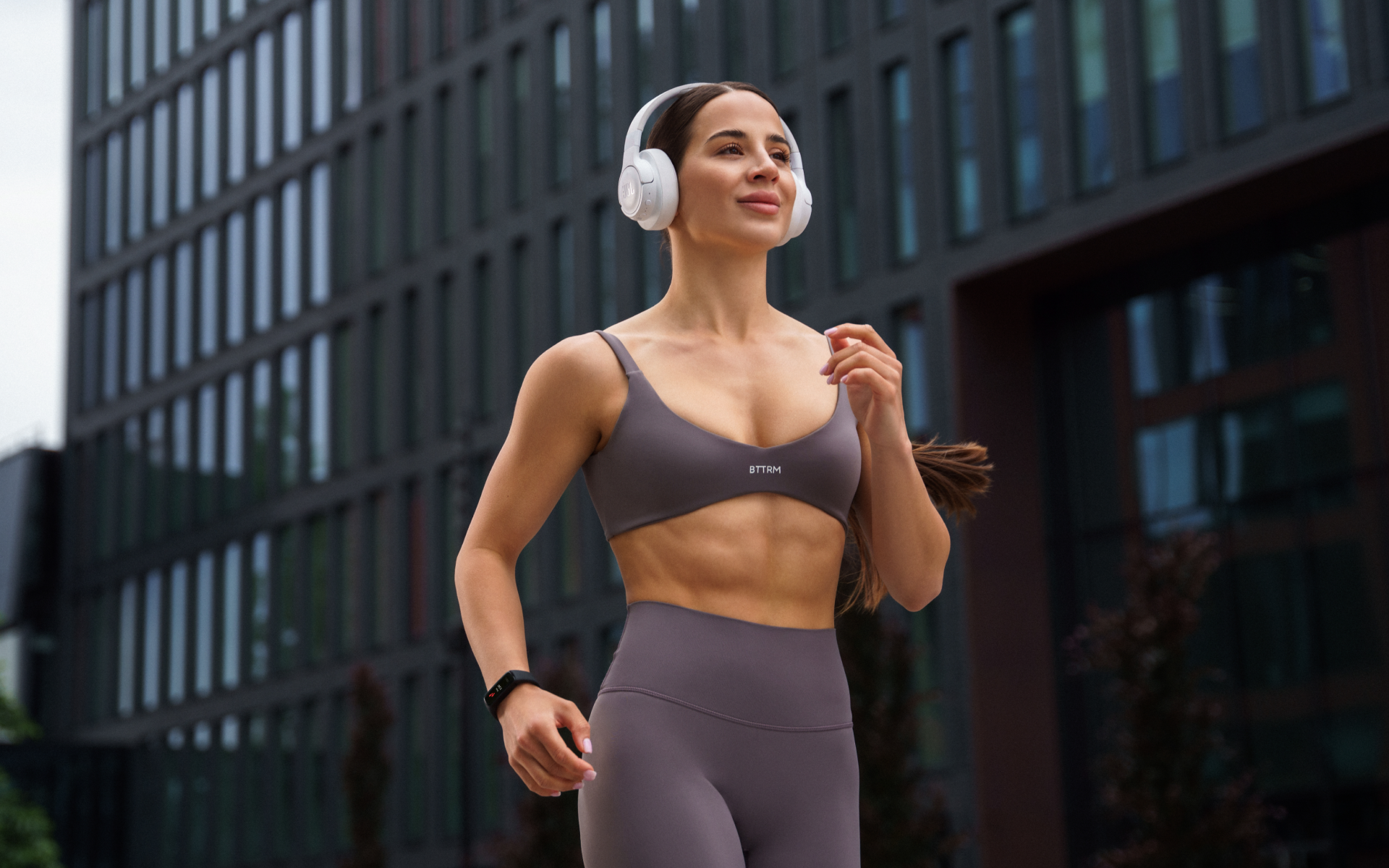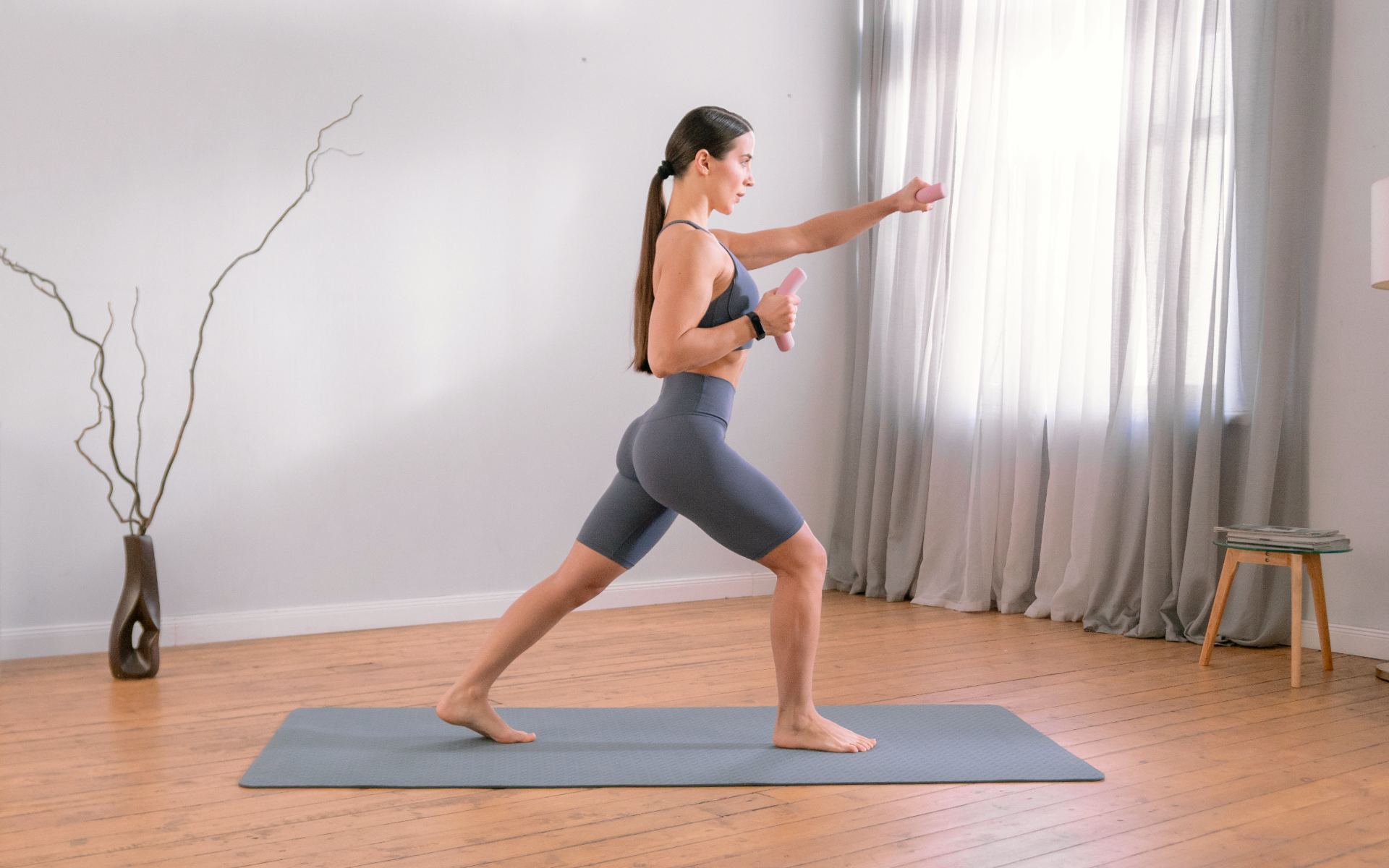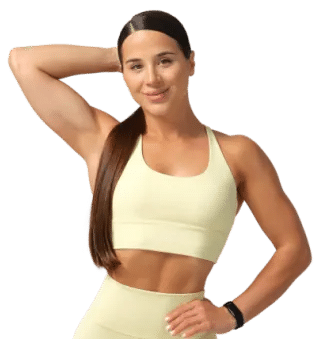Embarking on a new fitness journey can feel both exciting and overwhelming. You might be wondering if a short-term program, such as a 30-day challenge, can truly make a difference. This guide provides a structured, evidence-based 30-day full-body workout plan that’s designed to optimize your results by integrating key principles from modern sports science.
We’ll break down what happens to your body, what results you can realistically expect, and provide a detailed plan to follow. This program is built on research to ensure your effort is directed effectively, whether your goal is building strength, gaining muscle, or improving overall body composition.
Do 30-Day Workouts Actually Work?
Yes, 30-day workouts work by establishing consistent training habits and creating measurable physiological adaptations.
Within a month, you can achieve noticeable improvements in strength, muscular endurance, and neural efficiency – the ability of your brain to communicate with your muscles (1). The key is a well-structured program that applies progressive overload, meaning you gradually increase the challenge over time (2).
While a single month won’t completely remake your physique, it’s more than enough time to build momentum and see tangible progress. The most significant benefit of a 30-day program is its power to foster consistency. By committing to a structured plan, you lay the foundation for long-term habits, which are the true drivers of lasting transformation.
Can You Shape Your Body in 30 Days?
You can begin to shape your body in 30 days by laying a foundation of muscle and potentially reducing some body fat, leading to a more “toned” appearance.
A month of consistent resistance training can improve body composition and muscular strength. The extent of change will depend on your starting point, genetics, nutrition, and sleep. For instance, a beginner might see more rapid strength gains due to neural adaptations (3).
A 2023 Bayesian network meta-analysis published by the Frontiers in Physiology, synthesized data from over 100 studies and confirmed that nearly any form of structured resistance training is superior to no exercise for increasing both strength and muscle mass (4).
This means that a dedicated 30-day full-body workout plan for beginners can absolutely initiate the process of shaping your body.
BetterMe: Health Coaching app helps you achieve your body goals with ease and efficiency by helping to choose proper meal plans and effective workouts. Start using our app and you will see good results in a short time.
How To Transform Your Body in 1 Month?
To transform your body in one month, you must combine a consistent and progressive resistance training program with supportive nutrition and adequate recovery. Transformation is driven by making your muscles work harder than they’re accustomed to. This guide’s workout plan is designed to do just that, but your efforts outside the gym are equally important.
Here’s a simple, three-part framework for transformation:
- Train Intelligently: Follow a program that targets all major muscle groups and systematically increases in difficulty. The plan below uses a full-body approach, which research has shown to be highly effective. A 2024 meta-analysis by the Journal of Strength and Conditioning Research found that full-body and split-body routines produce similar strength and hypertrophy gains when weekly training volume – the total number of sets and reps – is equal (5).
- Fuel for Success: Your body needs resources to repair and build muscle tissue. Prioritize protein intake, aiming for approximately 1.6-2.2 grams per kilogram of body weight (6). This range is widely supported by research for maximizing muscle protein synthesis, the process of building new muscle. Combine this with whole foods, complex carbohydrates, and healthy fats. This is crucial for anyone who is following a 30-day full-body workout plan for weight loss.
- Prioritize Recovery: Muscle growth happens during rest, not during the workout itself. Aim for 7-9 hours of quality sleep per night. Sleep is essential for hormonal regulation, including the release of growth hormone, which is vital for tissue repair (7).
Read more: Full-Body Workout Plan for Women: Exercises, Tips, and FAQs
What Is a Transformative 30-Day Full-Body Workout Plan?
A transformative 30-day full-body workout plan is a structured, periodized program that stimulates every major muscle group multiple times per week to maximize both strength and hypertrophy.
The plan below uses an A/B workout structure performed three days per week on non-consecutive days (e.g., Monday, Wednesday, and Friday). This frequency is a sweet spot, as confirmed by research. This systematic review and meta-analysis from Sports Medicine backs training a muscle group 2-3 times per week to be highly effective (8).
Key Program Concepts
- 1RM (One-Repetition Maximum): The maximum weight you can lift for a single repetition of an exercise. We use percentages of 1RM to prescribe intensity.
- RIR (Repetitions in Reserve): How many more repetitions you could have completed with good form at the end of a set. An RIR of 2 means you could have done two more reps. Training close to failure (0-3 RIR) is essential for muscle growth.
- Progressive Overload: The principle of continually increasing the demands on your musculoskeletal system. In this plan, we’ll progress by adding repetitions each week before increasing weight.
The 30-Day Workout Schedule
You’ll alternate between Workout A and Workout B, with a rest day in between each session.
- Week 1: A, B, A
- Week 2: B, A, B
- Week 3: A, B, A
- Week 4: B, A, B
This is a 30-day workout plan at home if you have access to dumbbells or a barbell. If you have no equipment, you can adapt many of the movements with bodyweight variations.
The Workouts
Workout A: Strength Focus
This workout emphasizes heavier loads in lower rep ranges to build maximal strength.
- Goblet squat: 3 sets of 6-8 reps (2 RIR)
- Dumbbell bench press: 3 sets of 6-8 reps (2 RIR)
- Bent-over dumbbell row: 3 sets of 8-10 reps (2 RIR)
- Dumbbell Overhead Press: 2 sets of 8-10 reps (1-2 RIR)
- Plank: 3 sets, hold for 30-60 seconds
Workout B: Hypertrophy Focus
This workout uses moderate loads in higher rep ranges to maximize muscle growth.
- Dumbbell Romanian deadlift (RDL): 3 sets of 10-12 reps (1-2 RIR)
- Push-ups (or incline push-ups): 3 sets to 1-2 RIR
- Single-arm dumbbell row: 3 sets of 10-12 reps per arm (1-2 RIR)
- Dumbbell lateral raises: 2 sets of 12-15 reps (1 RIR)
- Reverse crunches: 3 sets of 15-20 reps (1-2 RIR)
The 4-Week Progression Plan
- Week 1: Perform the workouts as prescribed, focusing on learning the movements and finding the right starting weight. Aim for the lower end of the rep range (e.g. 6 reps for a 6-8 rep set).
- Week 2: Use the same weight as Week 1, but aim to add 1-2 repetitions to each set. For example, if you did 3×6 on goblet squats, try for 3×7 or 3×8.
- Week 3: Once you can complete all sets at the top end of the rep range with the prescribed RIR, increase the weight by a small amount (e.g. 2.5-5 lbs or 1-2.5 kg). Drop your reps back to the lower end of the range with the new, heavier weight.
- Week 4: Continue adding 1-2 reps to each set with the new weight from Week 3. This ensures you are continuously applying progressive overload. This progressive structure is what makes the plan effective for a 30-day full-body workout plan for female and male participants alike.
Read more: Beginner Glute Building Workout Plan: 6 Exercises That Actually Work
Exercise Execution Guide
Proper form is non-negotiable – it ensures safety and maximizes muscle activation.
- Goblet Squat
This movement targets the quads, glutes, and core.
- Stand with your feet slightly wider than shoulder-width apart and your toes pointed out slightly.
- Hold one end of a dumbbell vertically against your chest with both hands, cupping the top of the dumbbell. Keep your elbows tucked in.
- Brace your core and initiate the movement by sending your hips back and down, as if sitting in a chair.
- Keep your chest up and your back straight. Descend until your thighs are at least parallel to the floor.
- Drive through your heels to return to the starting position, squeezing your glutes at the top.
- Dumbbell Bench Press
This builds the chest, shoulders, and triceps.
- Lie on a flat bench with your feet firmly on the floor. Hold a dumbbell in each hand at your chest, with your palms facing forward.
- Press the dumbbells upward until your arms are fully extended but not locked. The dumbbells should be directly above your shoulders.
- Slowly lower the dumbbells back to the starting position, keeping your elbows at a 45-degree angle to your body.
- Briefly pause before pressing the weights back up for the next rep.
Reasons why BetterMe is a safe bet: a wide range of calorie-blasting workouts, finger-licking recipes, 24/7 support, challenges that’ll keep you on your best game, and that just scratches the surface! Start using our app and watch the magic happen.
- Bent-Over Dumbbell Row
This targets the upper back, lats, and biceps.
- Stand with your feet shoulder-width apart, holding a dumbbell in each hand with a neutral grip (your palms facing each other).
- Hinge at your hips, keeping your back straight, until your torso is nearly parallel to the floor. Allow your arms to hang straight down.
- Brace your core. Squeeze your shoulder blades together and pull the dumbbells up toward your hips.
- Focus on driving your elbows back, not just lifting with your arms.
- Lower the dumbbells with control to the starting position.
- Dumbbell Overhead Press
This movement targets the shoulders and triceps.
- Stand with your feet shoulder-width apart, holding a dumbbell in each hand at shoulder height, your palms facing forward.
- Brace your core and keep your ribs down.
- Press the dumbbells upward in a straight line until your arms are fully extended overhead, but not locked.
- Lower the dumbbells back to shoulder height with control, keeping your torso upright and avoiding leaning back.
- Plank
The plank builds total core strength and stability.
- Start by lying face down, then prop yourself up on your forearms and toes. Your elbows should be under your shoulders and your hands flat.
- Keep your body in a straight line from your head to your heels.
- Squeeze your glutes and brace your midsection, avoiding any sag in your lower back.
- Hold for the prescribed time, breathing steadily throughout.
- Dumbbell Romanian Deadlift (RDL)
This exercise focuses on the hamstrings, glutes, and lower back.
- Stand with your feet hip-width apart, holding a dumbbell in each hand in front of your thighs with an overhand grip.
- Keeping your legs almost straight (a slight bend in the knees is okay), hinge at your hips by pushing your glutes backward.
- Maintain a flat back as you lower the dumbbells toward the floor. Keep the weights close to your legs.
- Lower the dumbbells until you feel a deep stretch in your hamstrings, typically to mid-shin level.
- Reverse the motion by driving your hips forward and squeezing your glutes to return to a standing position.
- Push-Ups (or Incline Push-Ups)
Push-ups build the chest, shoulders, and triceps, while incline push-ups make the move easier.
- Set up with your hands slightly wider than shoulder-width apart and your feet together, creating a straight line from your head to your heels.
- Brace your core and lower your chest toward the ground, keeping your elbows at about a 45-degree angle.
- Pause when your chest is just above the floor or the inclination, keeping your body rigid throughout.
- Push the floor away, fully extending your arms at the top.
- For incline push-ups, place your hands on a sturdy elevated surface (such as a bench or step) to reduce the load.
- Single-Arm Dumbbell Row
This isolates the lats, upper back, and biceps on one side at a time.
- Place your left hand and left knee on a bench (or sturdy surface), with your right foot on the ground and your right hand holding a dumbbell.
- Keep your back flat and your torso nearly parallel to the floor.
- Pull the dumbbell up toward your hip by driving your elbow back, keeping your upper arm close to your body.
- Squeeze your back muscles at the top, then lower the dumbbell under control.
- Complete all reps on one side before switching.
- Dumbbell Lateral Raises
This exercise isolates the side deltoids for shoulder width.
- Stand with your feet hip-width apart and your arms at your sides, holding a dumbbell in each hand, your palms facing inward.
- With a slight bend in your elbows, raise both arms out to the sides until they’re at shoulder height, elbows and wrists in line.
- Pause briefly at the top, ensuring shoulders do the work, not momentum.
- Lower the dumbbells with control back to your sides.
- Reverse Crunches
Reverse crunches target the lower abdominals.
- Lie on your back with your knees bent and your feet flat on the floor, your arms at your sides.
- Brace your core and bring your knees in toward your chest, lifting your hips slightly off the floor.
- Pause at the top, squeezing your abs.
- Slowly lower your hips and legs back to the starting position with control. Avoid using momentum; keep the movement deliberate.
For more ideas on how to train without weights, read our no equipment workout plan.
Is a 30-Day Challenge Enough to See Results?
Yes, a 30-day challenge is enough to see measurable results in strength and endurance, particularly for beginners. The initial gains you experience are largely neural. Your brain becomes more efficient at recruiting muscle fibers and coordinating movement patterns, which leads to rapid strength increases that often outpace muscle growth (4).
You can expect to lift heavier weights or complete more repetitions by the end of the month. Visually, you may notice that your muscles look and feel firmer. This is due to cellular swelling (the “pump”) and the very early beginnings of actual hypertrophy (9). While you won’t build pounds of muscle in 30 days, you’ll lay a solid foundation.
Are you interested in a comprehensive routine? Explore our full-body strength training routine.
What Happens to Your Body After 30 Days of Workout?
After 30 days of consistent workouts, your body undergoes several positive adaptations across multiple systems. These changes are both physiological and neurological, setting the stage for long-term progress and improved health.
- Increased Muscular Strength and Endurance: Your muscles will be stronger. You’ll be able to lift more weight for the same number of reps or more reps with the same weight. Your ability to sustain effort will also improve (10).
- Neural Adaptations: Your mind-muscle connection will strengthen. Movements will feel smoother and more coordinated as your central nervous system becomes more efficient at activating the correct muscles (3).
- Metabolic Improvements: Consistent exercise can improve insulin sensitivity, which means your body becomes better at using carbohydrates for energy rather than storing them as fat. Your resting metabolic rate may also slightly increase as you build lean muscle tissue (11).
- Improved Body Composition: You will likely experience a slight increase in lean muscle mass and a potential decrease in body fat, particularly if your training is paired with a supportive diet. A 2024 meta-regression preprint by Pelland and colleagues noted that gains in muscle size and strength increase as weekly training volume increases, although with diminishing returns (12). This 30-day plan provides an effective dose of volume to kickstart this process.
- Enhanced Mood and Energy: Exercise is a powerful mood booster that increases the production of endorphins. Many people report feeling more energetic, sleeping better, and having a greater sense of well-being after just a few weeks of consistent training (13).
Are you new to fitness? Start with a basic full-body workout.

Yes, doing 100 push-ups a day will increase your muscular endurance and may build some muscle in your chest, shoulders, and triceps, particularly if you’re a beginner. However, this approach lacks progressive overload and variety, so your results will likely plateau quickly. A balanced program targeting all muscle groups is more effective for overall fitness. To “tone” muscle, you need to build it and reduce the layer of fat covering it. Research has shown that both heavy lifting (for fewer reps) and lighter lifting (for more reps) are effective for muscle hypertrophy, provided the sets are taken close to muscular failure. A 2023 meta-analysis by Currier et al. found that higher loads were optimal for strength, while a range of loads worked for hypertrophy (4). A good program includes both. Ten thousand steps is roughly equivalent to 5 miles (or approximately 8 kilometers), although this varies based on a person’s stride length. For an average adult, one mile is approximately 2,000 steps. Lifting weights doesn’t directly burn belly fat, as you cannot “spot reduce” fat from a specific area. However, resistance training helps reduce overall body fat, including belly fat, by building metabolically active muscle tissue and improving the body’s ability to manage blood sugar. The most effective way to lose belly fat is by combining strength training with a calorie-controlled diet and cardiovascular exercise.Frequently Asked Questions
Will 100 push-ups a day do anything?
Is it better to lift heavy or light to tone?
How many miles is 10,000 steps?
Does lifting weights burn belly fat?
The Bottom Line
A 30-day full-body workout plan is a powerful tool for kickstarting your fitness journey. It provides the necessary structure to build foundational strength, improve muscle definition, and most importantly, forge the habit of consistency. The science is clear: regular, progressive resistance training delivers results. By following this evidence-based plan, you’re not just exercising, you’re applying proven principles to transform your body and health.
This month is your starting line. Embrace the process, focus on your form, and be patient with your progress. The strength and confidence you build over the next 30 days will serve as the perfect launchpad for a lifetime of fitness.
DISCLAIMER:
This article is intended for general informational purposes only and does not serve to address individual circumstances. It is not a substitute for professional advice or help and should not be relied on for making any kind of decision-making. Any action taken as a direct or indirect result of the information in this article is entirely at your own risk and is your sole responsibility.
BetterMe, its content staff, and its medical advisors accept no responsibility for inaccuracies, errors, misstatements, inconsistencies, or omissions and specifically disclaim any liability, loss or risk, personal, professional or otherwise, which may be incurred as a consequence, directly or indirectly, of the use and/or application of any content.
You should always seek the advice of your physician or other qualified health provider with any questions you may have regarding a medical condition or your specific situation. Never disregard professional medical advice or delay seeking it because of BetterMe content. If you suspect or think you may have a medical emergency, call your doctor.
SOURCES:
- The increase in muscle force after 4 weeks of strength training is mediated by adaptations in motor unit recruitment and rate coding (2019, pmc.ncbi.nlm.nih.gov)
- Effects of Resistance Training Overload Progression Protocols on Strength and Muscle Mass (2024, pubmed.ncbi.nlm.nih.gov)
- Neuromuscular adaptations to resistance training in elite versus recreational athletes (2025, frontiersin.org)
- Resistance training prescription for muscle strength and hypertrophy in healthy adults: a systematic review and Bayesian network meta-analysis (2023, pubmed.ncbi.nlm.nih.gov)
- Efficacy of Split Versus Full-Body Resistance Training on Strength and Muscle Growth: A Systematic Review With Meta-Analysis (2024, pubmed.ncbi.nlm.nih.gov)
- Systematic review and meta-analysis of protein intake to support muscle mass and function in healthy adults (2022, pubmed.ncbi.nlm.nih.gov)
- Sleep and muscle recovery: Endocrinological and molecular basis for a new and promising hypothesis (2011, sciencedirect.com)
- Effect of Resistance Training Frequency on Gains in Muscular Strength: A Systematic Review and Meta-Analysis (2018, link.springer.com)
- Potential Mechanisms for a Role of Metabolic Stress in Hypertrophic Adaptations to Resistance Training (2013, link.springer.com)
- Adaptations to Endurance and Strength Training (2018, pmc.ncbi.nlm.nih.gov)
- The Effect of Resistance Training to Failure on Insulin Sensitivity and Muscle Adaptations in Overweight Men (2023, journal.uitm.edu.my)
- The Resistance Training Dose-Response: Meta-Regressions Exploring the Effects of Weekly Volume and Frequency on Muscle Hypertrophy and Strength Gain (2024, sportrxiv.org)
- The impact of exercise on depression: how moving makes your brain and body feel better (2024, pmc.ncbi.nlm.nih.gov)
